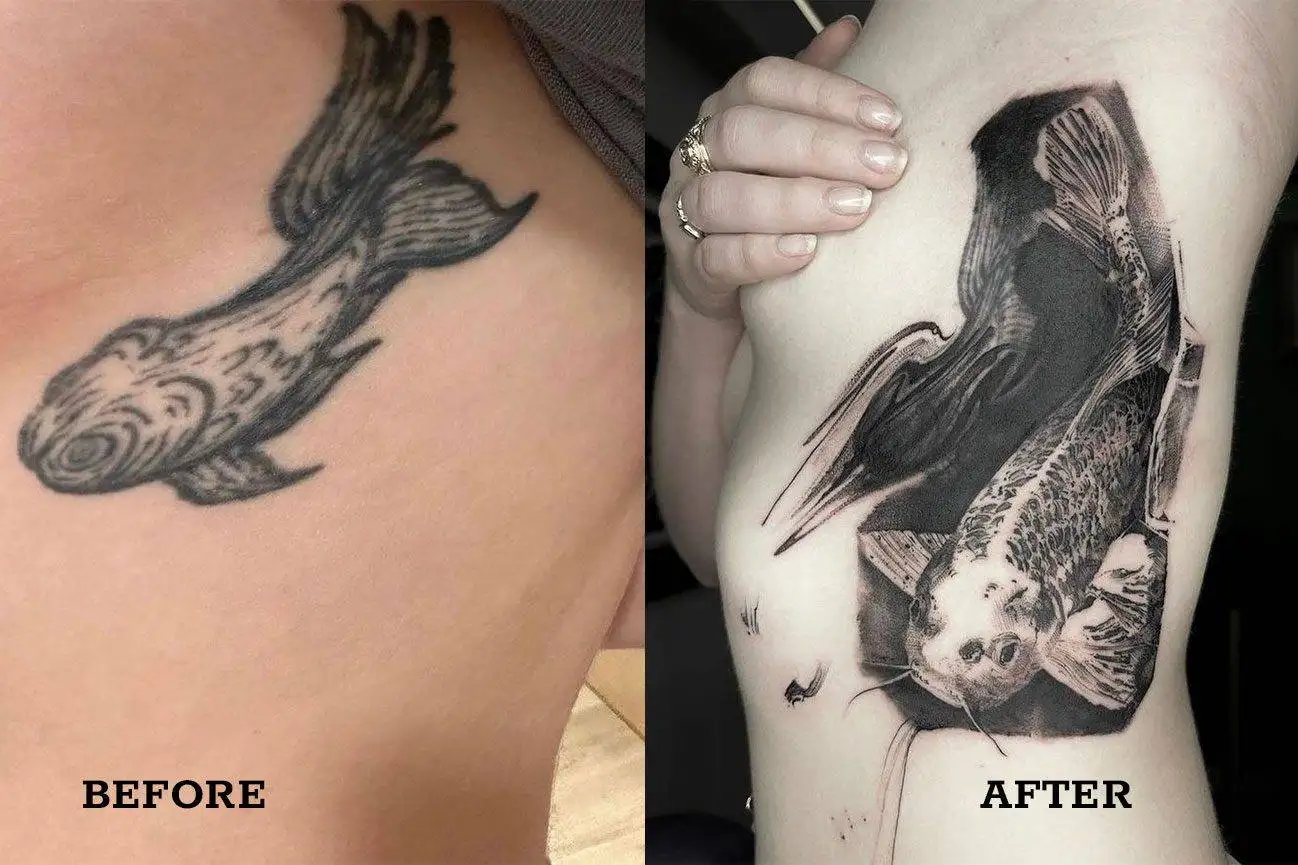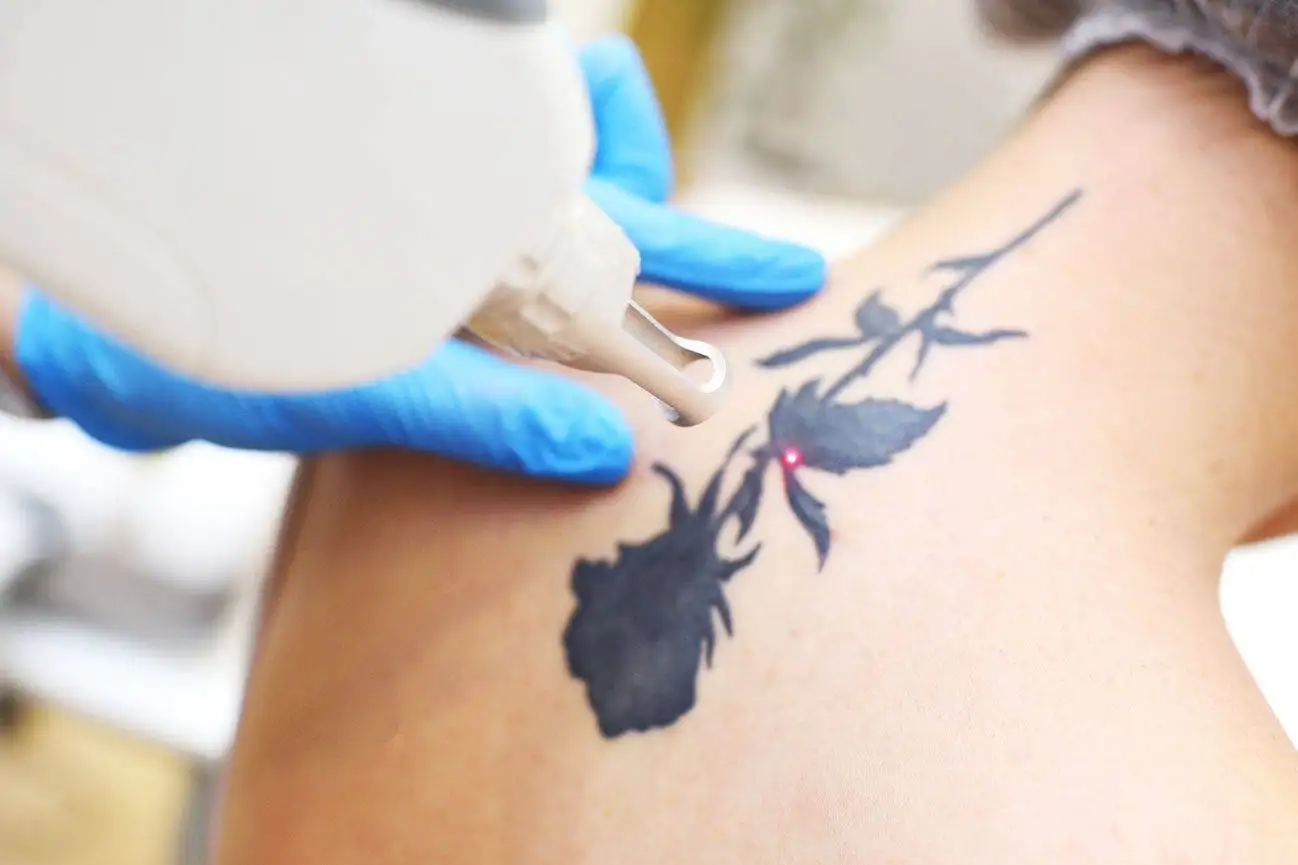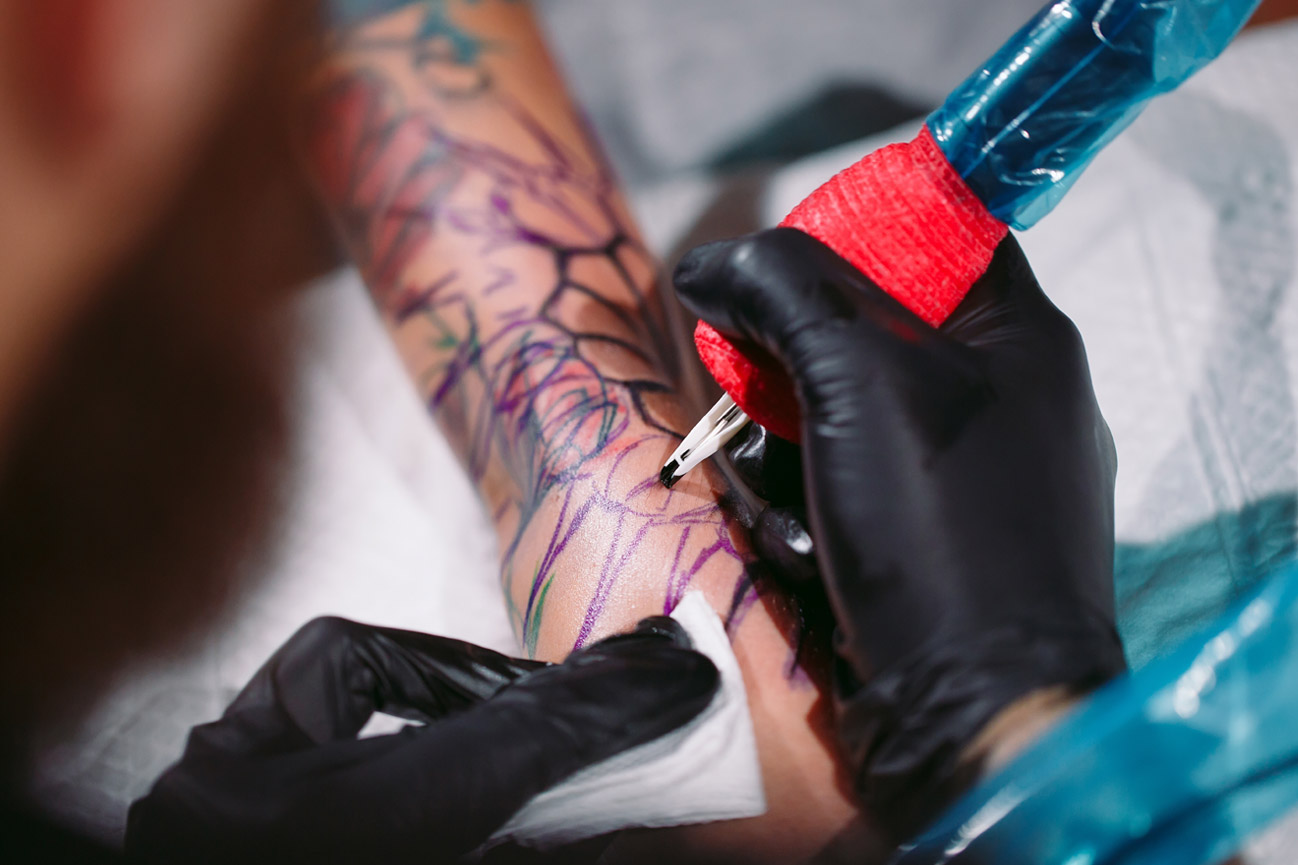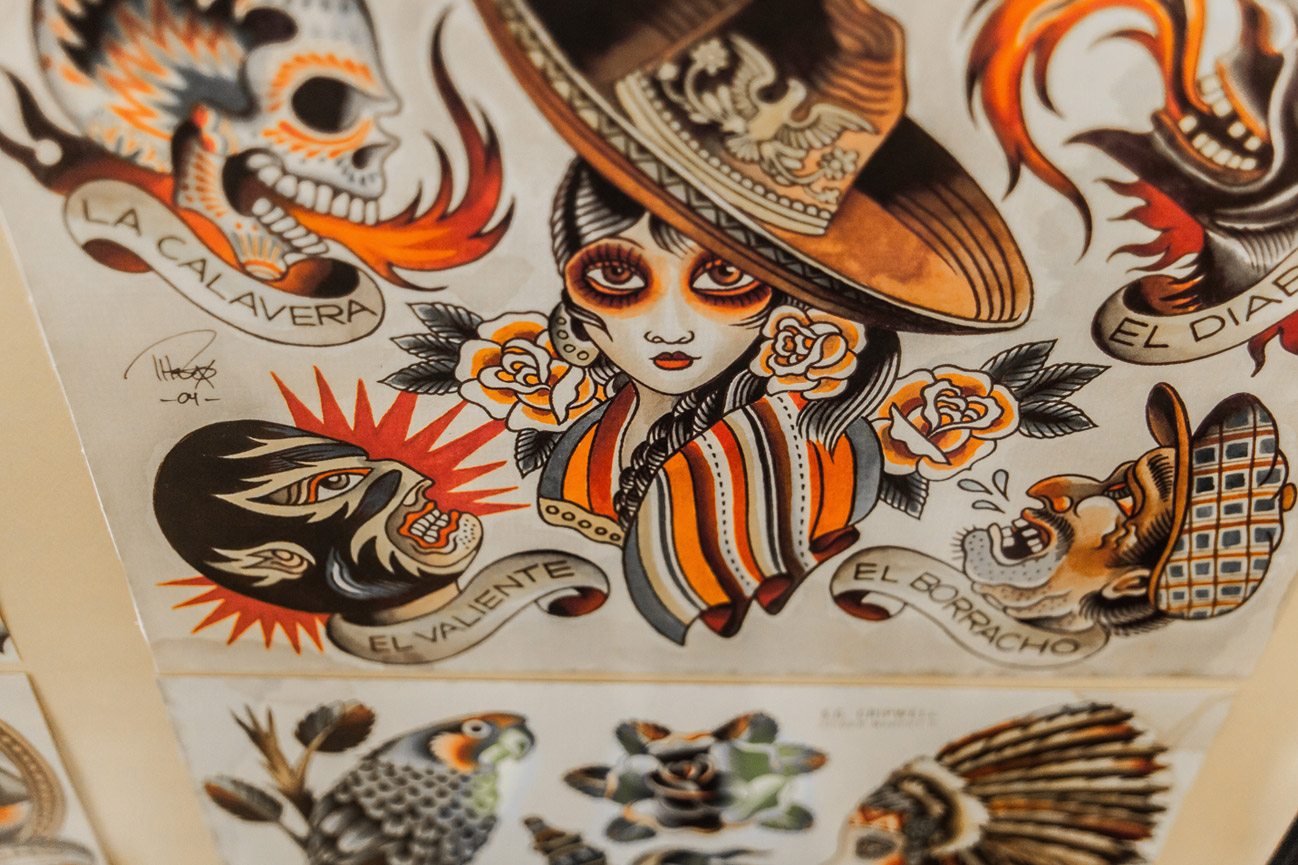Tattoo cover-ups – ever stood there, staring at the mirror, feeling the need for a tattoo glow-up? You’re not alone. Many find themselves at this turning point when the ink they got at 18 no longer aligns with their current self or simply doesn’t resonate. The good news is, with advanced technology like laser tattoo removal and evolving techniques, nothing has to be permanent. Let’s look into options and solutions to make you either love or let go of your tattoos.
Exploring Options: Choosing Between Cover-ups and Removal
When people think about changing or saying goodbye to an old tattoo, they have to make a big decision—whether to remove it or cover it up with something new. If you started getting tattooed when you were young, you may not have thought about future tattoos or how placement may affect getting more in the future. Maybe you loved the tattoo at one point but it’s not what you want now. Covering up outdated or unloved tattoos with a larger design can be a great way to get the look you want.
This choice can be complicated and depends on factors such as how much you want to spend fixing it, what your long-term goals are, and whether you want to keep your current ink or start fresh by completely removing it. Many folks decide to explore covering up their tattoos because they still want to be tattooed, but may want a change that matches their current taste, adjust to a new job, or just give new life to old or regrettable ink. Thanks to advances in tattooing and plenty of skilled artists around the world, being stuck with a tattoo you don’t like is a thing of the past. More people are realizing there are great options for covering up, reworking, and enhancing existing tattoos.
Strategic Cover-ups: Flexible Solutions Beyond Removal
Starting the journey of covering up a tattoo involves finding the right artist. Not every tattoo artist is willing to cover-up tattoos, so doing research and asking questions is imperative. If you have an artist you really want to get tattooed by, it never hurts to ask if they are willing to do a cover-up. Be sure to look at portfolios, social media accounts, and reviews to ensure the chosen artist aligns with your envisioned tattoo style. After identifying a potential artist, scheduling a consultation is a great next step. This face-to-face interaction allows the artist to examine your existing tattoo to formulate the best plan of action for the cover-up. This will allow you to clearly discuss your expectations and wants for your tattoo.
Keep in mind that depending on your existing tattoo, you may have to make some adjustments to your idea for the cover-up. Tattoo cover-up require strategic placement, and some designs may not work well in covering your old tattoo. Skilled cover-up tattoo artists are armed with a discerning eye and a repertoire of techniques. Be patient and trust your artist! They are there to give you the best possible outcome and a tattoo that looks great
The Evolution of Transformation: Navigating Tattoo Removal Techniques
When opting for a cover-up, laser tattoo removal may need to be utilized, especially for tattoos with bold colors, or thick line work like tribal designs. For individuals who want a tattoo completely gone, particularly those with patchwork-style sleeves or isolated tattoos, laser removal stands as the perfect option. It has come a long way from once painful and potentially harmful methods, targeting the tattoo pigment and breaking it down gradually, creating a smoother canvas for the cover-up process or a clean slate.
Understanding the Laser Tattoo Removal Process
Laser tattoo removal is a multi-session procedure where a specialized laser targets the tattoo pigment. This breaks down the ink particles into smaller fragments, allowing the body to naturally eliminate them over time. For tattoos with thick line work or intense colors, this process aids in lightening the tattoo, making it easier for a subsequent cover-up. Not all tattoos need to be completely eliminated to have a successful tattoo cover-up. Ask your artist their opinion and communicate to your laser technician your goal. They will curate a game plan to effectively lighten your tattoo so you can give it a fresh new look.
The Importance of Downtime Between Sessions
Laser tattoo removal will require more than one session. Downtime between laser removal sessions is crucial for optimal results. Your skin needs time to heal and recover from the laser’s impact. Your laser sessions will be scheduled six weeks apart from each other. The intervals between sessions allow for the gradual fading of the tattoo, reducing the risk of scarring or adverse reactions. Patience during this phase contributes to the overall success of the removal process.
Post-Removal Considerations for Tattooing
After completing the laser removal sessions, a waiting period is necessary before getting a new tattoo over the treated area. Despite the sessions concluding, the breakdown of tattoo pigment continues. Tattooing too soon could result in the new ink not adhering properly, leading to potential rejection and compromised quality. Waiting ensures a stable and healed canvas for the cover-up. It is recommended that you wait 6-8 weeks after your final laser treatment before getting another tattoo over the treated area. Because healing times after treatment can vary per person, it is wise to wait additional time before moving forward with a new tattoo to ensure your skin is properly healed and will not have adverse reactions to your new ink.
Exploring Tattoo Rework: Transforming Old Ink with a Modern Twist
Reworking a tattoo involves enhancing or updating an existing design to address issues such as faded colors or poorly done linework. While most tattoo artists possess the technical skills for reworks, not all may be open to touching someone else’s work. When seeking a professional for a tattoo rework, it’s crucial to find someone willing and experienced in this specialized craft.
Candidates for tattoo reworking often include individuals with tattoos showing signs of wear and tear, like faded colors or uneven lines. The process may also be suitable for those who have outgrown the initial design and wish to refresh it with a contemporary touch. Common adjustments during a rework include improving line work, revitalizing colors, or introducing additional elements to enhance the overall aesthetic.
Selecting the right artist is essential for a successful tattoo rework. It goes beyond technical proficiency; the chosen artist should understand the client’s vision, respect the original tattoo, and possess the creativity to bring new life to the design. A thorough consultation is crucial for effective communication and ensuring both the client and the artist are on the same page regarding the desired changes.
If you are content with your tattoo but it could use a refresh, consider reaching out to the original artist for a retouch. Many artists are willing to do retouches, especially if it’s within a certain time frame from the initial appointment. Some may even offer retouches for free during this period. It’s a good idea to check with your original artist first, as they would likely appreciate the opportunity to tweak their own work. After all, it is their art, and they are familiar with the nuances of the original design.
Concluding the Tattoo Transformation
As we wrap up our exploration of tattoo cover-up and removal techniques, it’s evident that body art offers diverse avenues for change. From strategic cover-ups offering flexibility to laser removal as a clean slate option, the options cater to varied preferences. The meticulous planning, trust in skilled artists, and the patience required in this process shape not just the physical outcome but a canvas that mirrors adaptability and choice. Whether opting for concealment, removal, or reworking, each decision etches a unique chapter on your skin, a reflection of evolving techniques, technology, and the dynamic nature of personal preferences. As we conclude, your skin stands as a testament to the versatility and creativity found in the world of tattoo transformations.





